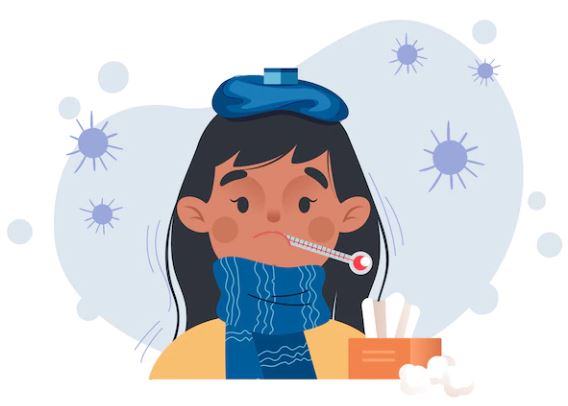Signs of autoimmune disease
The immune system protects your child's body from outside invaders. These include germs such as bacteria, viruses, and fungi, and toxins (chemicals made by microbes). The immune system is made up of different organs, cells, and proteins that work together.
Diagnosis of autoimmune diseases
Autoimmune diseases and their field are associated with the framework of the immune system, where they occur as a result of dysfunction in the function of the immune system.
There are approximately 80 known autoimmune diseases, While there are a large number of other diseases suspected of having an autoimmune background
In part of these diseases damage and self-attack is caused by Autoantibodies and in other parts damage is caused by immune cells.
Autoimmune diseases also increase the risk of heart disease, stroke, kidney disease, lung disease and cancer, regular follow-up with health care provider and specialists where appropriate will prevent complications from developing.
Who is at risk of autoimmune disease?
Some risk factors for autoimmune diseases include women (about 80% in women), genetics (other family members are more likely to develop autoimmune diseases), previous diagnosis of autoimmune diseases (lupus, rheumatoid arthritis and others, some types of infection (, group bacteria infection), obesity, smoking and exposure to toxins (air pollutants, organic solvents).
How can autoimmune affect everyday life?
In another scientific study published in (La Revue de Médecine Interne) titled by Autoimmune diseases and cancers is interested in the satellite autoimmune manifestations of a tumor pathology, which may reveal it, enamell the evolutionary course or complicate its treatment. The occurrence of autoimmune pathologies is classic during lymphoproliferative syndromes. The manifestations observed are varied but it is mainly cytopenia, including autoimmune hemolytic anemia, most often during chronic lymphoid leukemia. The relationship between cancer and inflammatory myopathy is not disputed. The relative risk of cancer during dermatomyositis is 3.4 to 4.4. The optimal strategy to be adopted for the search for occult cancer is not defined but the search for anti-p155 antibodies and the realization of a PET-scanner seem to be particularly interesting in this indication. A table of cutaneous or systemic vasculitis may reveal tumor pathology. It is most often a haematopathy (tricholeucocyte leukemia) but sometimes a vsolid cancer (lung cancer or digestive cancer in particular). High age and corticosteroids should be a warning factor. Polyarthritis clinically comparable to joint involvement of rheumatoid arthritis can reveal cancer, most often bronchial. Polyarthritis is most often HIV-negative, in an elderly male subject and in a context of impairment of the general condition. Myelodysplastic syndromes are accompanied by autoimmune manifestations in 10 to 30% of cases. It is most often a vasculitis or atrophiing polychondritis. As for the autoimmune complications of anti-tumour treatments, these are primarily autoimmune cytopenias related to fludarabine and alemtuzumab and thyroiditis related to interferon alpha and cervical radiotherapy.
In the face of certain autoimmune diseases, the search for an underlying tumor pathology is imperative, as the association seems obvious epidemiologically. Some presentations are warning signs that should prompt the search for associated neoplasia. Table 1 summarizes the main associations of cancer and autoimmune diseases
| autoimmune diseases | Most common underlying neoplasia | |
|---|---|---|
| Haematological manifestations | ||
| AHAI/PTAI | LLC, LTAI, LNH | |
| Autoimmune neutropenia | LGL | |
| dermatological manifestations | ||
Paraneoplastic | LNH, LLC | |
| Bradikyniqu angiedema | LNH, GMSI | |
| neurological manifestations | ||
| Anti-MAG Antibody Neuropathy | GMSI, IgM, maladie de Waldenström | |
| CANOMAD syndrome | ||
| Guillain-Barré syndrome | Maladie de Hodgkin | |
| myasthenia | Maladie de Hodgkin, LNH | |
| Manifestations musculaires | ||
| polymyositis | Maladie de Hodgkin, carcinome (poumon, vessie) | |
| dermatomyositis | Adénocarcinome (ovaire surtout), LNH | |
| Autoimmune necrotizing myositis | Adénocarcinome | |
| vasculitis | ||
| rheumatoid purpura | Tricholeucocyte leukemia, MDS, NHL, adenocarcinomas | |
| Rheumatological manifestations | ||
| rheumatoid arthritis | Adénocarcinome bronchique | |
| relapsing polychondritis | SMD, lymphomes, leucémies aiguës | |
Symptoms of autoimmune disease
Early symptoms are similar to many autoimmune diseases, such as:
- Tired.
- Painful muscles.
- Swelling and redness.
- Low fever.
- Difficulty concentrating.
- Numbness and tingling in the hands and feet.
- Hair loss.
- Rash.
Individual diseases can also have their own unique symptoms. For example, type 1 diabetes causes extreme thirst, weight loss, fatigue, and colitis causes abdominal pain, bloating, and diarrhoea.
With autoimmune diseases such as psoriasis or rheumatoid arthritis symptoms may appear and disappear from time to time.






